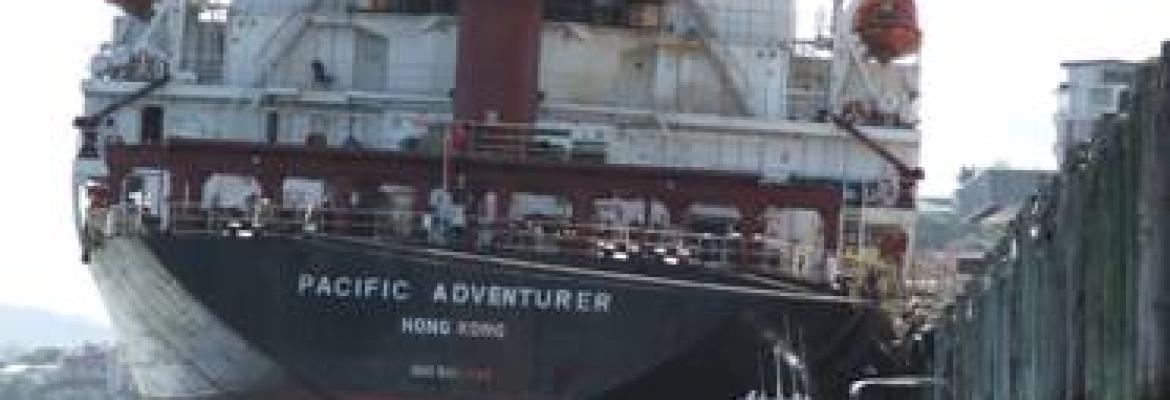
At 3.12 am (Queensland Time) on 11 March 2009, the 1990 built, 23,737 dwt, Hong Kong China registered general cargo ship Pacific Adventurer lost 31 containers of ammonium nitrate overboard some seven nautical miles east of Cape Moreton while en route to Brisbane from Newcastle.
The ship reported later that it was holed on its port side near its engine room and a fuel service tank had been breached with the loss of some oil before the remainder was pumped from the damaged tank.
The ship later estimated that up to 270 tonnes of heavy fuel oil was lost into the sea. However, there also was damage to one of the ship’s starboard bunker fuel tanks below the waterline. Following an independent audit of the oil aboard in Brisbane, an estimated 270 tonnes had been lost.
The oil impacted significant portions of the south-east Queensland coast, in particular:
- the eastern and northern beaches and headlands of Moreton Island (a national park)
- the eastern beaches of Bribie Island (north of Brisbane)
- the beaches and foreshores of the Sunshine Coast (north of Brisbane)
- small areas of the Brisbane River.
Under the National Plan response arrangements, the Queensland Government through Maritime Safety Queensland managed the oil spill response. AMSA, as manager of the National Plan, provided specialist and logistical support.
While the majority of oiling occurred on sandy beaches, large amounts of oil buried by sand were being deposited back on the beaches because of the weather and sea conditions, complicating the clean-up operations. As all areas have high tourism and community amenity value, a high standard of clean-up was required to support the recovery of the tourism industry and restore previous levels of amenity.
Clean-up operations continued for two months. A total of about 2500 workers and personnel were deployed for the entire clean-up, including:
- Maritime Safety Queensland
- the Department of Environment and Resource Management
- local regional councils
- Emergency Management Queensland
- workers from QR and Road Tek
- skilled and private contractors
- the State Emergency Service
- Queensland Police Service
- Queensland Fire and Rescue Service.
AMSA personnel, as well as 72 members of the National Response Team from all states/NT, the oil industry and contractors, also provided assistance during the period. At the height of the response operation, 400 response personnel were working on Moreton Island each day. Approximately 3000 tonnes of sand contaminated with oil was removed from Moreton Island. The work was mostly manual labour using shovels and rakes to fill about 8000 bags each day. Specialised sand sieving equipment was also used to assist the clean-up operations on Bribie and Moreton Islands.
Outcome
Considering the size of the oil spill, very little wildlife was affected. Birds, turtles and sea snakes were captured, rehabilitated and released by Queensland Parks and Wildlife Service.
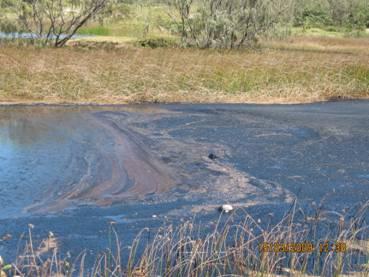
Oil washing up against land
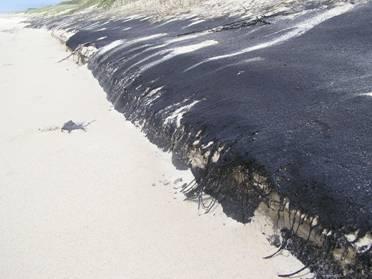
An oiled beach
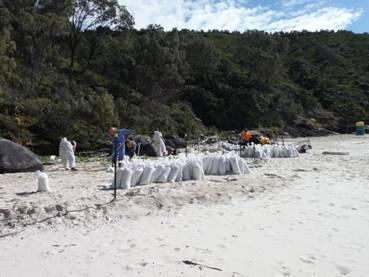
Clean-up operations
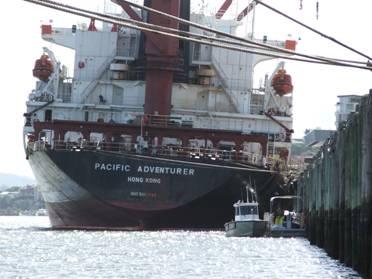
The Pacific Adventurer
Related information
Read about Australia's National Plan for Maritime Environmental Emergencies.